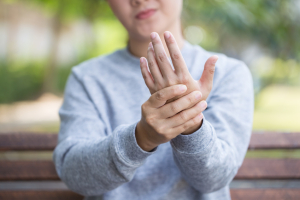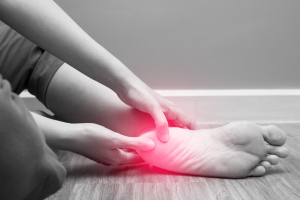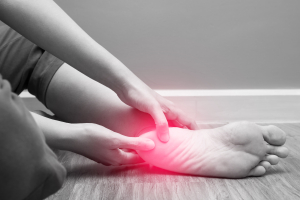
5 Common Skin Conditions

There are many different skin conditions that people may experience throughout their lives. The skin is often referred to as the body's largest organ, weighing over eight pounds and stretching over 22 square feet for an average adult. The skin performs a number of essential functions, including providing the sense of touch and protecting internal structures from radiation, microbes, heat, and cold. As the body's protective shield, it is inevitable that the skin will occasionally develop conditions that affect its functioning. Here are some symptoms of five common skin conditions:
Eczema
Eczema, also known as atopic dermatitis, is a skin condition that can affect anyone but is especially prevalent among children. Eczema occurs when allergens and skin irritants, such as cold, dry air, and sweat, inflame the skin. Some research also suggests that eczema may have a genetic cause.
Symptoms of eczema include dry, itchy skin and red patches especially on the hands, wrists, elbows, feet, ankles, knees, neck, upper chest, eyelids. Occasionally, these symptoms also appear on the face and scalp. The patches may include small red bumps and may become thickened, scaly, or cracked. Scratching the dry patches of skin may cause swelling of the skin and fluid to leak from any bumps. There is no known cure for eczema and treatment is typically directed toward symptom relief. For example, some sufferers of eczema use creams or ointments for eczema itch relief.
Psoriasis
Psoriasis is a skin condition in which skin cells multiply up to ten times the normal rate. This causes skin cells to build up, creating thick, scaly, red patches of skin. These scaly patches are often itchy and occasionally painful. The scaly patches can also be dry, cracked, and crusty. The cause of psoriasis is not entirely clear, but it is thought to arise from an immune system disorder that causes the protective system to attack healthy skin cells and produce excess skin cells.
Psoriasis is not contagious, but it may run in families. Psoriasis has no known cure, so psoriasis care is typically intended to provide psoriasis relief. For example, psoriasis cream can often provide psoriasis relief. Stress, smoking, and alcohol can also cause psoriasis to flare up, so avoiding these can also provide psoriasis relief.
Athlete's Foot
Athlete's foot is caused by a variety of fungi. While millions of species of fungi are known, humans are adversely affected by only about 300 species of fungi. The fungi that cause athlete's foot include species of Trichophyton, Epidermophyton, and Microsporum fungi. Symptoms of athlete's foot include a scaly, itchy, red rash that typically begins between the toes or on the sole of the foot.
Athlete's foot is contagious and is spread by contact with infected skin or towels, shoes, and floors that have been in contact with infected skin. Unlike creams for eczema or psoriasis relief, athlete's foot cream can cure athlete's foot. The cream contains an antifungal medication, miconazole nitrate, that kills fungi by inhibiting their ability to produce essential enzymes.
Dry Skin
Dry skin can have many causes. Dry air and cold weather can dehydrate skin, while hot baths or showers and harsh detergents and soaps can remove the skin's natural oils, allowing moisture to escape. Symptoms of dry skin include itchy, rough, flaky skin and skin cracks.
Itchy skin is usually temporary, and the symptoms usually subside after the skin regains its moisture. Treatment usually involves a dry skin cream that includes a moisturizer to create a protective layer on the skin and seal in the skin's naturally occurring moisture.
Age Spots
Age spots, also called liver spots or solar lentigines, are dark spots that develop on the skin. Age spots are caused by overactive pigment cells in the skin due to sun damage. Nevertheless, true age spots are harmless, although they should be checked by a dermatologist because they can be confused with skin cancer. People with light skin or who spend a great deal of time in the sun are more likely to develop age spots. While age spots are more prevalent in people over age 50, age spots can appear in people of any age. Age spots can be treated with age spot cream that lightens the spots.






